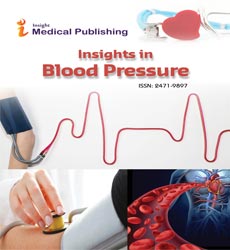Abstract
When Peri-Membranous VSD Presents with a Rare Set of Complications in an Adult Male: A Case Report
Peri-membranous VSD, synonymous with type-2 VSD, is the most common type of congenital heart disease. Aortic regurgitation is usually associated with supra-cristal VSD and is rare with type 2 VSD. VSD may develop into sub-aortic stenosis in 20% of cases. There are studies about the ascending aorta dilation with TOF, TGA and truncus arteriosus but few report it with VSD. However, little data is available in literature. VSD’s due to left to right shunting, yields increased pulmonary artery blood flow and sheer stress leading to pulmonary artery dilation (mostly with PDA and ASD). A case of 30 year old male, diagnosed with VSD at the age of seven but refused for surgical closure back then, came in ER department with decompensated congestive cardiac failure and peripheral edema. After initial stabilization, he underwent transthoracic echocardiography that showed small peri-membranous VSD with left to right shunt, sub-aortic membrane with severe LVOT obstruction, moderate aortic and mitral regurgitation. TTE was followed by CT angiography that revealed small VSD with significant AR. Sub-aortic membrane, aneurysmal dilated aortic root and ascending aorta and aneurysmal dilated pulmonary arteries. Cardiac surgeons were taken onboard and advised for VSD closure with aortic valve replacement, sub aortic membrane resection and aortic root replacement. Patient and family were counseled regarding the procedure but refused again for surgery.
Author(s):
Dr. Deebaj Nadeem graduated from Sindh medical college at the age of 24 years. Currently doing FCPS cardiology training in national institiute of cardiovascular diseases.
Abstract | PDF
Share this

Google scholar citation report
Citations : 71
Insights in Blood Pressure received 71 citations as per google scholar report
Abstracted/Indexed in
- Google Scholar
- China National Knowledge Infrastructure (CNKI)
- Directory of Research Journal Indexing (DRJI)
- WorldCat
- Secret Search Engine Labs
Open Access Journals
- Aquaculture & Veterinary Science
- Chemistry & Chemical Sciences
- Clinical Sciences
- Engineering
- General Science
- Genetics & Molecular Biology
- Health Care & Nursing
- Immunology & Microbiology
- Materials Science
- Mathematics & Physics
- Medical Sciences
- Neurology & Psychiatry
- Oncology & Cancer Science
- Pharmaceutical Sciences
